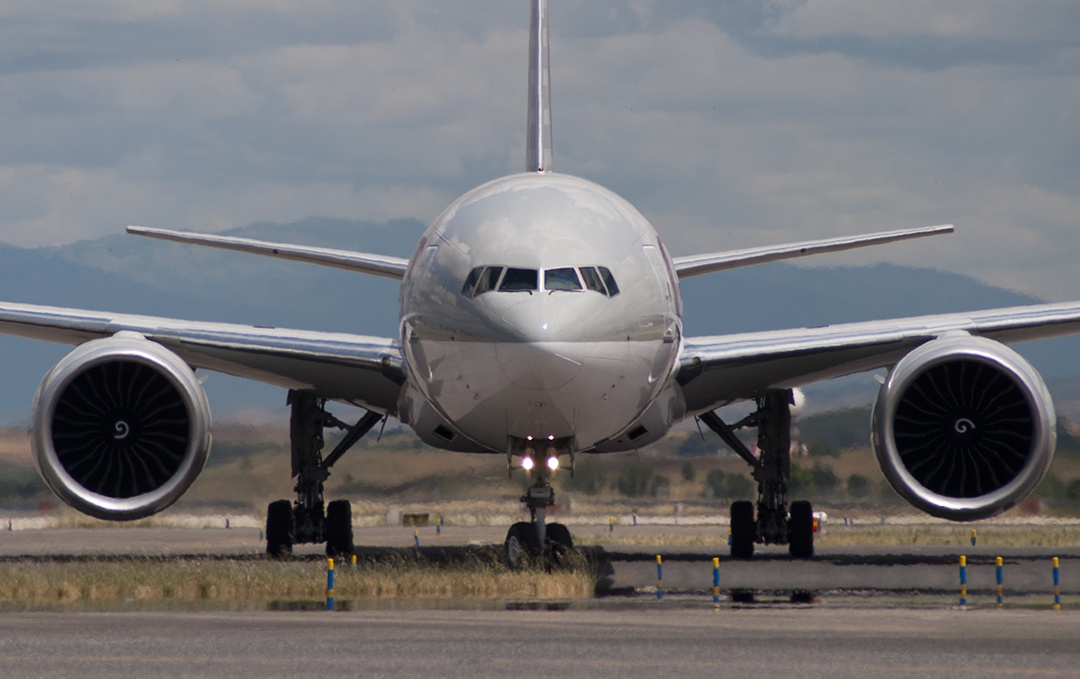Article
Big Aircraft, Big Changes
BY Eric Bahr
New Trends in Aircraft MRO

Throughout the history of commercial air travel, the trend has been to produce and utilize increasingly larger aircraft. This is a trend that persists today, as concepts for larger aircraft, like Boeing’s 777-9X, are announced. The philosophy here is simple: the bigger the aircraft, the more seats available. More seats per aircraft means getting more seats into corresponding gates. In airports that have limited available gate space, this translates to more revenue for airlines.
But as new aircraft arrive — offering the promise of moving more passengers more efficiently — airlines come face to face with a new challenge. Hangars that have been in use for decades reveal that their spaces are too small for these new fleets, impacting the maintenance and operations of support facilities and personnel. This puts airlines in a difficult position.
Airlines have been making the choice between in-house and contract maintenance for years, using either third-party maintenance, repair and overhaul (MRO) shops, or the shops of other airlines. Another trend is moving the responsibility of this maintenance to original equipment manufacturers (OEMs), which has the potential to solve many of the capacity issues airlines are facing.

Defining the Issues of New Aircraft
Unlike the ever-increasing maintenance required of older aircraft, growing a fleet with newer aircraft doesn’t mean a spike in maintenance. Instead, a younger, healthier fleet requires less maintenance, not necessarily new or expanded facilities. Breaking down aircraft checks into smaller, segmented checks eases the impact of maintenance on existing hangars as well. But if existing facilities cannot handle the new planes, they cause an operational inefficiency.
Airlines and the consultants they work with have come up with several techniques to solve the space issues created by larger airplanes, such as cutting tail doors into doorframes to accommodate taller aircraft. Some have even gone as far as to tilt the aircraft to pass the tail underneath the doorframe, setting the nose of the aircraft down once inside. While these practices work and can extend the lifespan of an outdated hangar, they are ultimately temporary and inefficient, increasing damage risk and making the need for entirely new hangars apparent.
But the introduction of larger aircraft also can contribute to a reduction in overall airport space. Aircraft like the Airbus A380 require wider runways, affecting areas originally set aside for support facilities. To expand a runway, existing facilities must be leveled, clearing out current tenants and making room for new hangars difficult to come by. This puts a premium on space for hangars at fully developed and landlocked airports.
Hangars and Design-Build Delivery
By John Maranowicz, LEED AP BD+C, QSP, CESSWI
The continued evolution of hangar design will make flexibility more important as new aircraft arrive. More complex maintenance checks and procedures affect designs, from component shops and equipment to the implementation of new technology.
The ever-changing nature of the industry makes it difficult for owners and contractors to keep up. One way to get the most state-of-the-art systems is to utilize the design-build delivery method to optimize cost and schedule.
Over the past several years, owners have begun to realize the benefits of design-build and the solutions they bring to design and construction obstacles. With public-private partnership projects becoming more prevalent, design-build project delivery can be used to expedite project delivery while maintaining cost and schedule control on aviation projects.

Pushing Toward OEM Maintenance
But the construction of new hangars is not a dying trend — increased passenger capacities mean that airlines now have the funds needed to bring state-of-the-art support facilities online, and there are several hangar projects currently in progress across the U.S. But as fleets become more diverse, airlines are discovering that the operational standards and facilities needed to conduct maintenance on a wide range of aircraft can create inefficiencies.
This understanding is part of the reason that some OEMs are making a push to sell their maintenance services to airlines with new or diverse fleets. The convenience of taking on the maintenance schedules of these new aircraft solves many hangar and space issues; however, the OEMs could face backlash from airline partners and third-party MRO companies, all of which derive revenue from MRO work.
Reacting to Changes
In light of these trends, airlines must consider the future of their hangar assets and maintenance protocols.
Existing facilities will need to be adapted to incorporate smarter technology and practices that can handle the maintenance of legacy fleets and the influx of new aircraft. Additionally, Boeing’s announcement of the new midsized airplane (NMA) concept raises the likelihood of a future with taller, longer and wider aircraft, requiring accommodations larger than today’s hangars for standard narrow-bodies but smaller than the hangars for today’s wide-bodies.
Keeping these things in mind, as well as the influence of OEM-controlled maintenance, will help airlines better manage their maintenance needs well into the future.
✖
